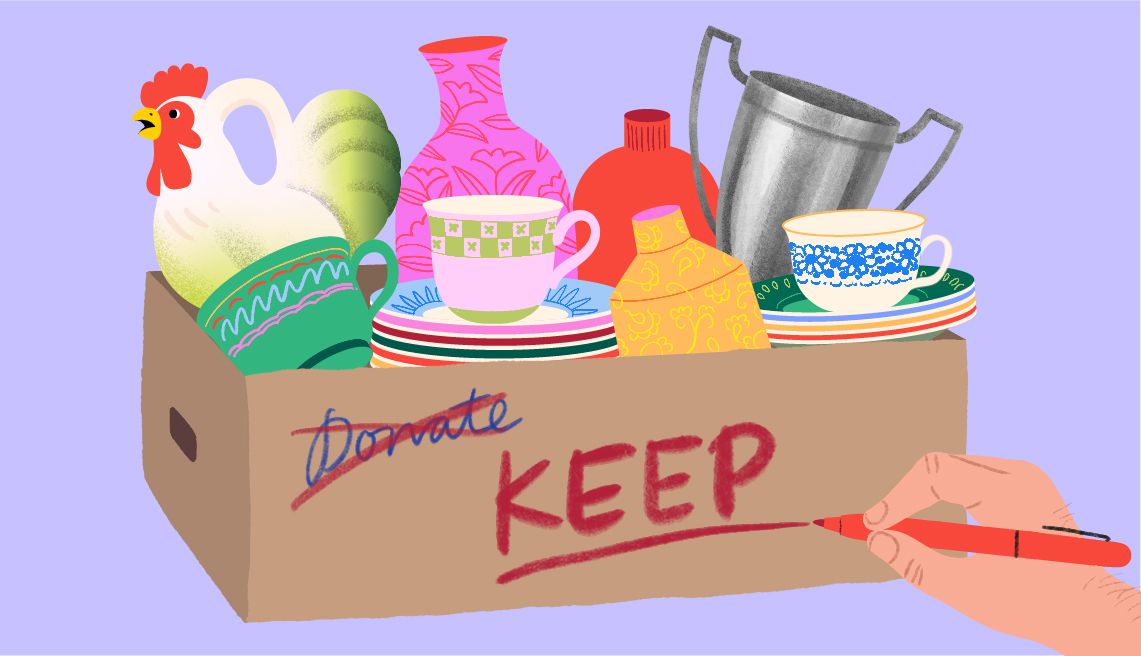AARP Hearing Center


Welcome to Ethels Tell All, where the writers behind The Ethel newsletter share their personal stories related to the joys and challenges of aging. Come back Wednesday each week for the latest piece, exclusively on AARP Members Edition.
My husband starts to twitch at the mere mention of getting rid of some of our stuff. Our millennial daughter has made it clear she doesn’t want the dark mahogany furniture passed down from grandparents she never met, or the antique teacups for the tea she doesn’t drink. She’s perfectly happy with her Ikea dinnerware for four.
I get it. For many years, my mother tried to convince me to take home her wedding china, a gift from her mother, who had little money for splurges. I kept resisting until one day it showed up in a box at my door. I stowed away the delicate white plates with blue flowers until the day I had another look — and suddenly fell in love with them.
I began using the china for every family holiday get-together in my 50s. Now I’m in my 70s, and like my mom, I feel the need to simplify my stuff. But every time I try to get my husband on board, his response is the same to everything I suggest purging: “It’s priceless,” he claims. “It’s not,” I say. “Google it.”
Those Depression-era red glass plates make me depressed thinking of the dust they’ve accumulated from 30 years on the top shelf in our kitchen. “They’re worth something,” my husband insists. During a trip to North Carolina to visit friends, I browsed a thrift store and texted him photos of the same exact plates, tagged at five dollars apiece. Wouldn’t make a dent in our retirement fund.
I take a break from encouraging him to part with items he’s inherited, and pull out remnants of my mother’s apartment after she died in 2009. She was a competitive golfer and had a glass china closet full of silver trophies. I hold up a badly tarnished ice bucket with her name on the plaque.
“That’s Sylvia’s!” he says, alarmed. “It’s priceless!” He doesn’t understand that there’s a difference between emotional connection and retail value.
“Do you want to polish it? And when’s the last time we used an ice bucket?”
“Never,” he says, trying not to let me wear him down.
Every year, we keep putting this off due to his resistance. Each year, I grow more insistent.
I reach a breaking point whenever he goes to an estate sale and comes home with an unsightly vase. “We’re supposed to be at the stage of purging our stuff,” I say, “and now you’re bringing in more stuff?”


































































You Might Also Like
I Bruise Easily. Should I Be Concerned?
A doctor’s advice about why frequent bruising occurs and when you need to worry
Do Sparks Still Exist for Older People Dating?
Young love is all about passion. Is that still true as we age?
99 Great Ways to Save 2025 Edition
Stretch your dollars — and cut costs on groceries, travel, entertainment and more